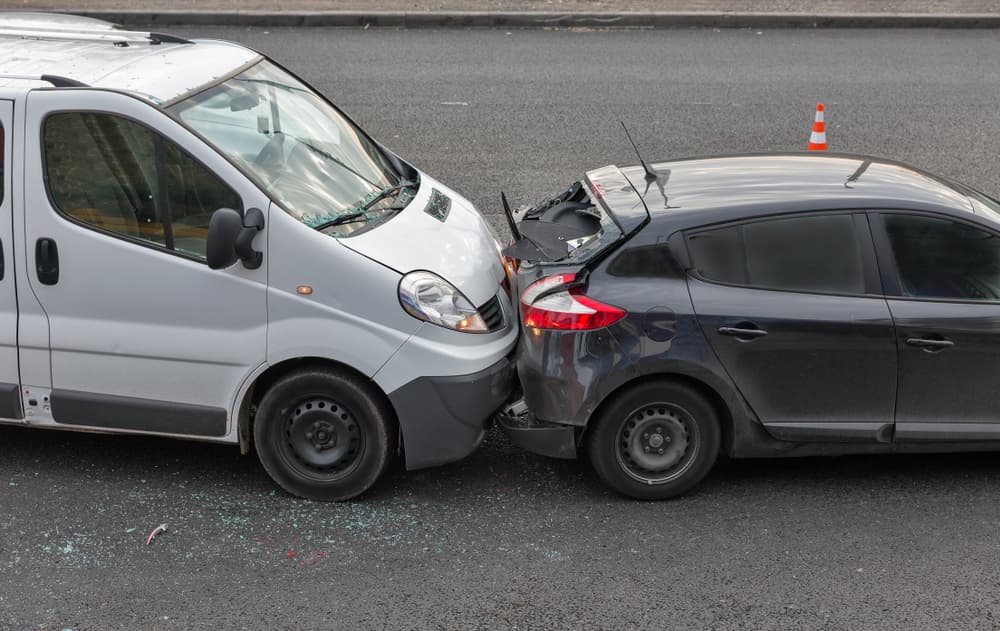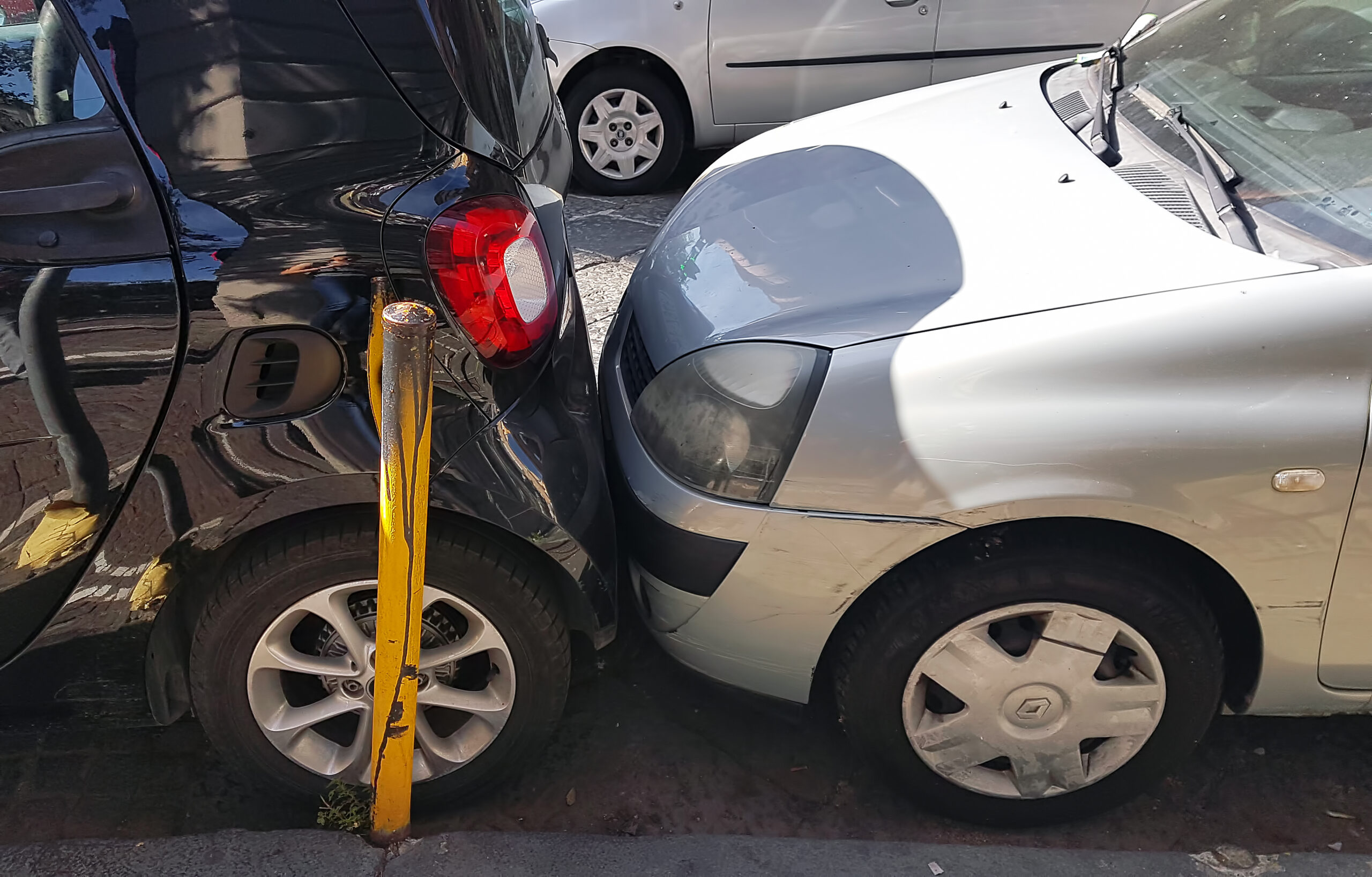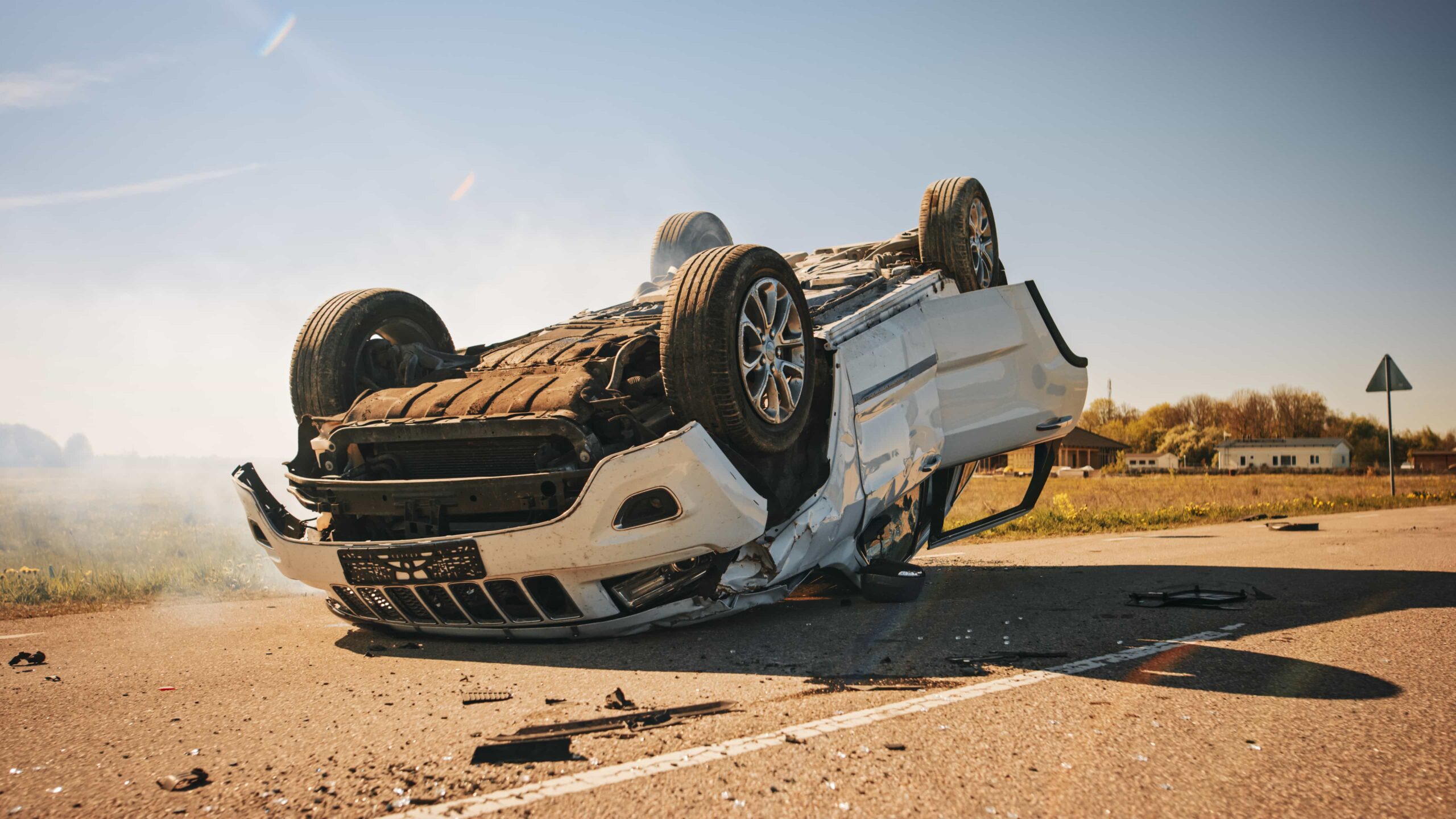What Are The Safest Cars In America?
Approximately 90 people die each day in the United States because of motor vehicle accidents. The US has a much higher car accident death rate compared to other high-income countries. While the U.S. has 10.3 deaths per 100,000 people, New Zealand (the country with the second highest car accident death rate), has 5.6 deaths per 100,000 people. Our country has nearly double the amount of deaths from car accidents than the second highest country when adjusting for population. When you take into account car accident injuries, rather than just deaths, we see that the damage done by car accidents is even higher.
Thankfully, the rise of advanced safety features in moderately priced vehicles is helping to reduce these numbers. When safety features like brake assistance and lane departure warning systems were first introduced, they were limited to more expensive cars. As these technologies became less expensive, they became more common in affordable vehicles, which means they were accessible for the average American.
Since
deaths from US car accidents are high, and accidents are the third leading cause of death in America behind heart disease and cancer, it begs the question what can we do about it? Well there are many solutions: better laws, stricter regulations, and making better decisions about what cars we and our family members drive.
Since we can't directly do anything about the first two, let's look at the third: What are the safest cars in America?
What Criteria is Used to Determine the Safest Vehicles in America?
Before we begin listing off the safest cars and SUVs in the US, we must first understand who made these lists and what criteria they use.
The organizations and institutions that we trust to decide which cars are the safest in America include:
- National Highway Traffic Safety Association (NHTSA)
- Insurance Institute for Highway Safety (IIHS)
These organizations use a wide range of techniques to test a vehicle’s safety. But their aim is always to determine how a vehicle would fare in
different types of accidents. Some of these tests are overseen by the federal government. Others are developed by private companies to test specific scenarios and outcomes.
Let’s look at the three main organizations that test which cars are the safest in the US.
*It should be noted that these are brief summaries of these tests, and they are much more scientific and detailed than explained below. If you are curious, you can click on any of the organization’s names below and it will take you to their testing page.
National Highway Traffic Safety Association

The
National Highway Traffic Safety Association (or NHTSA) is responsible for testing vehicle safety each year. They test between 90 and 150 vehicles in four different types of crash tests. They are:
- Frontal Crash Test Scenario: Vehicles are tested in a head-on collision at 35mph into a solid barrier (wall). This represents a crash between two similar vehicles with the same weight. The test then measures injury outcomes to the head, neck, chest, and legs.
- Side Barrier Crash Test Scenario: Vehicles are tested with an angled collision at 20mph into the driver’s side front fender. This represents an intersection type collision. This test looks for injury to the head, chest, abdomen, and pelvis.
- Side Pole Crash Test Scenario: Vehicles are tested in a collision with a 3,015 lb object into the side of the vehicle at 38.5mph. This represents loss of control that results from a crash into a telephone pole on the driver’s side. This test measures for injury to the head, chest, lower spine, abdomen, and pelvis.
- Rollover Resistance Test Scenario: Vehicles are tested in a rollover stability test. This test represents a sudden rollover from loss of control of an SUV during a turn. It measures the rollover resistance rating that determines how “top-heavy” a vehicle is and whether a vehicle is vulnerable to tipping during a severe maneuver.
Based on these four tests, vehicles are given an overall ranking out of five stars. They’re also individually ranked for each test. The NHTSA states that ranking for the frontal crash test should only be used to compare vehicles of the same size, class, and weight. Other tests are standard across the board. These 5-star ratings from NHTSA are considered scientifically accurate and are highly respected in the science, car and driver, and car selling communities.
Insurance Institute for Highway Safety
The
Insurance Institute for Highway Safety (IIHS) is a non-profit organization founded in 1959 by auto insurers. They provide ratings for vehicles based on:
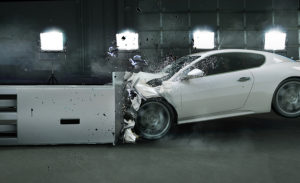 Frontal crash test: This is the first test performed by IIHS. This test consists of variations of the front crash test, including:
Frontal crash test: This is the first test performed by IIHS. This test consists of variations of the front crash test, including:
- Moderate overlap front crash tests
- Driver-side small overlap front crash tests
- Passenger-side small overlap frontal crash test
- Side crash tests: In this test, a 3,300-pound SUV-like barrier hits the driver side of the vehicle at 31 mph. This test is important because side-impact collisions are all too common and extremely dangerous.
- Roof strength test: In this test, the strength of the roof is determined by pushing an angled metal plate down on one side of the roof at a slow but constant speed to measure the force required to crush the roof.
- Head restraints and seat tests: This test uses a special dummy that has a realistic spine to test the vehicle seats and head restraints during an impact. This test measures how well the head restraint and seat will prevent a passenger from sustaining damage to their neck and back.
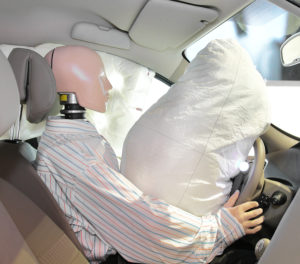 Front crash prevention tests: For the front crash prevention test, depending on the make and model of the car it is put through a test that is designed to see if the vehicle can stop before a collision occurs. If the car has special technology to prevent a front-end crash then that technology is also tested for its efficacy.
Front crash prevention tests: For the front crash prevention test, depending on the make and model of the car it is put through a test that is designed to see if the vehicle can stop before a collision occurs. If the car has special technology to prevent a front-end crash then that technology is also tested for its efficacy.
- Headlight tests: This test measures the reach of a vehicle's headlights as the vehicle travels straight and along curves.
The rating system is as follows: Good, Acceptable, Marginal, or Poor on each point. The IIHS then labels certain vehicles as their Top Safety Pick+ and Top Safety Pick.
Car Safety Rankings Compiled by U.S. News & World Report
The U.S. News & World Report Car Safety Rankings are based on two types of information:
- Reviews about the car from major newspapers, magazines, and automotive websites. For each third-party review, they score the car on three different components:
- Performance
- Interior
- Critics' Rating
- Data from third-party sources such as safety, reliability, fuel economy, cargo, and towing/hauling capacity data.
The safety score is based on the NHTSA and IIHS results and advanced accident-avoidance technologies that come standard with the vehicle. Then, reliability is taken into account based on ratings provided by JD Power. And finally, fuel economy, cargo, and various third-party awards are also taken into account.
So now that you understand how these ratings are calculated, without further delay, here are the safest new cars in America.
Safest New Cars on the Market
Based on all of our research, and because it is the standard in the industry, the following ratings are based on the IIHS Top Safety Pick+.
Safest Small Cars
- Honda Insight
- Mazda 3 hatchback
- Mazda 3 sedan
- Subaru Crosstrek hybrid
Midsize Cars
- Mazda 6
- Nissan Maxima
- Subaru Legacy
- Subaru Outback (built after October 2019)
- Toyota Camry
Midsize Luxury Cars
- Lexus ES
- Mercedes-Benz C-Class sedan
- Tesla Model 3
Large Luxury Cars
- Audi A6
- Genesis G70 (built after December 2019)
- Genesis G80
Small SUVs
- Mazda CX-3
- Mazda CX-5
- Subaru Forester
Midsize Luxury SUVs
- Acura RDX
- Cadillac XT6 (built after October 2019)
- Hyundai Nexo
- Lexus NX
- Mercedes-Benz GLE-Class (made after July 2019)
But what if you are in the market for a used car but still want to make sure that it's safe?
Used Cars Under $10,000 that Still Have a High Safety Rating
The above safety ratings are based on new vehicles. However, if you are in the market for a used vehicle, you can still use safety data to help ensure that you are buying the safest possible car for yourself and your family. Below is our list of the top seven used cars that are considered to be very safe.
-
2011 Scion xB
Avg. Price: $6,929 - $8,297 | U.S. News Overall Score: 8.9/10
The 2011 Scion xB is considered to be very safe. Its traction control, anti-lock brakes, electronic brake-force distribution, and electronic stability control contribute to its perfect safety rating. The IIHS named the 2011 vehicle as a Top Safety Pick, giving it the score of “Good” in three out of four crash tests. This is a good first car for your teen driver or just someone looking to stay safe while keeping their budget low.
-
2012 Buick Verano
Avg. Price: $7,718 - $8,474 | U.S. News Overall Score: 8.9/10
The 2012 Buick Verano was named a Top Safety Pick from the IIHS and rated as “Good” in all four crash tests. Four airbags, traction control, anti-lock disc brakes, and stability control come standard on the vehicle which will come in handy if you are ever in a situation where somebody runs a red light or
fails to yield.
-
2012 Toyota Prius C
Avg. Price: $7,414 - 8,733 | U.S. News Overall Score: 8.8/10
Standard safety features on the 2012 Toyota Prius C include anti-lock brakes, traction control, stability control, driver knee airbags, and side curtain airbags. While the car’s not tested by the NHTSA, the IIHS named it a Top Safety Pick. And it received a “Good” rating in all four crash tests. The abundance of airbags in the 2012 Toyota Prius are an excellent safety feature since they help prevent all various types of injuries that are common in car accidents.
-
2011 Hyundai Elantra
Avg. Price: $6,529 - $8,685 | U.S. News Overall Score: 8.1/10
The 2011 Hyundai Elantra features traction control, stability control, front-seat side airbags, active front head restraints, anti-lock disc brakes, and side curtain airbags. It also received a “Good” rating in all four crash tests by the IIHS. This vehicle is perfect for those of us who have to drive on
rainy and icy roads regularly, as is common in Chicagoland. Winter road conditions can be extremely hazardous. So features like anti-lock brakes and traction control can come in handy.
-
2010 Subaru Legacy
Avg. Price: $6,133 - $9,044 | U.S. News Overall Score: 7.9/10
The 2010 Subaru Legacy was named a Top Safety Pick by the IIHS with a “Good” rating for all four crash tests. Not only that, but the NHTSA also rated it highly, with a 5/5 star rating. Safety features include anti-lock brakes, brake assist, stability control, side curtain airbags, and front-seat airbags. Subarus are also known for holding their value and for having few mechanical issues. This makes them a great pick for a value car under $10,000.
-
2011 Mitsubishi Outlander Sport
Avg. Price: $6,273 - $7,716 | U.S. News Overall Score: 7.8/10
The IIHS gave the 2011 Mitsubishi Outlander Sport the rating of “Good” in four crash tests and the rating of “Acceptable” in the driver’s side small overlap front test. Standard safety features include traction control, anti-lock disc brakes, hill start assist, front-seat side airbags, stability control, rear side curtain airbags, and driver-side knee airbags. In the case of a collision, the new owner of a used Mitsubishi Outlander Sport will not regret all of these strategically placed airbags.
-
2010 Volkswagen Eos
Avg. Price: $5,502 - $6,162 | U.S. News Overall Score: 7.7/10
The 2010 Volkswagen Eos earned a rating of “Good” in all four crash tests administered by the IIHS. Safety features on the vehicle include anti-lock disc brakes, stability control, front-seat airbags, and rain-sensing windshield wipers. Volkswagen has long been known to make some of the safest cars around. Because of their reputation and their focus on safety, the 2010 Volkswagen Eos is a great choice for a budget car that is still very safe. This is a great pick, especially at that price.
Were you injured in an Illinois car accident? Contact Abels and Annes today.
Cars are safer than ever these days and they keep getting safer. But that doesn't mean car accidents won’t continue to happen. In fact, research shows that one of the biggest hurdles toward switching America over to all electric vehicles is the longevity of older vehicles. Quite simply, this means vehicles that don’t have advanced safety features will continue to be on our roads for decades to come. Because of this, we all have to do our part to drive safely, watch out for negligent drivers, and to choose cars that give us the best possible chance at surviving an accident.
If you or someone you love has been injured in a car accident, please contact our talented team of
Chicago auto accident attorneys here at Abels & Annes. For more information and to schedule a free case evaluation, please
contact us online or call us at 312-924-7575.
David Abels
Partner
David Abels has carved a niche for himself in the personal injury law sector, dedicating a substantial part of his career since 1997 to representing victims of various accidents. With a law practice that spans over two decades, his expertise has been consistently recognized within the legal community.
Author's Bio
 The National Highway Traffic Safety Association (or NHTSA) is responsible for testing vehicle safety each year. They test between 90 and 150 vehicles in four different types of crash tests. They are:
The National Highway Traffic Safety Association (or NHTSA) is responsible for testing vehicle safety each year. They test between 90 and 150 vehicles in four different types of crash tests. They are:
 Frontal crash test: This is the first test performed by IIHS. This test consists of variations of the front crash test, including:
Frontal crash test: This is the first test performed by IIHS. This test consists of variations of the front crash test, including:
 Front crash prevention tests: For the front crash prevention test, depending on the make and model of the car it is put through a test that is designed to see if the vehicle can stop before a collision occurs. If the car has special technology to prevent a front-end crash then that technology is also tested for its efficacy.
Front crash prevention tests: For the front crash prevention test, depending on the make and model of the car it is put through a test that is designed to see if the vehicle can stop before a collision occurs. If the car has special technology to prevent a front-end crash then that technology is also tested for its efficacy.
